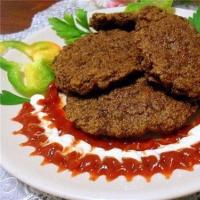Water-based paints for plywood. Varnishes for coating plywood. Preparing for work
Most often, plywood is laid to level the floor surface before installing the floor covering. This process produces a subfloor that can be covered with almost any type of material.
Of course, plywood products are used extremely rarely as a finishing coating, but a plywood floor in a dacha will look quite appropriate and can even highlight the features of the interior, to which you can also add elements made from this material, for example, plywood furniture or decorative decorations.
Advantages of plywood floors:
- The coating is warm and provides an additional level of soundproofing, so you won't have to increase utility costs during the heating season or suffer from the cold.
- The installation system is so simple that you can lay the plywood yourself without the help of specialists.
- The material lends itself perfectly to any type of processing, so to cut and install it you will not need to purchase special equipment; ordinary tools that can be found in almost every home will be sufficient.
- Installation of plywood can be done not only on joists or wooden floors, but also on a concrete base.
- The material is extremely durable and exhibits a high level of resistance to various loads that may arise during operation.
Note! Plywood flooring consists of veneered wood that can contract and expand under the influence of humidity and temperature changes, so you should leave gaps of approximately 2-4 mm between the boards to prevent the coating from swelling.
It is this feature of plywood as a wood material that can prevent the use of such a coating as a finishing coating in an apartment where you want to achieve an ideal result and a completely smooth surface. The presence of gaps can reduce the external level of attractiveness of the floor, but if you take plywood for installation in the country, this option will allow you to reduce repair costs and create a warm coating.
Features of installing plywood on joists
Most often, a plywood floor is installed on a frame made of beams, which are called joists.

The installation process is very simple:
- Clean the surface from construction debris and dust.
- Apply markings in those places where the level of the plywood floor will be and where the joists will be placed. Keep in mind that the logs are installed at the same distance in increments of approximately 30-60 cm. The height will depend on how much you have to raise the floor surface to level it.
- Treat prepared logs with an antiseptic before installation.
- Using adjusting anchor screws, install the joists along the markings and secure them. To make sure that all joists are placed level, use a building level.

- Adjust the placement of the joists if necessary and trim the excess parts of the anchors.
This is what the process of installing a frame made of beams (logs) looks like. After this, you can begin laying the plywood sheets.
Technology for laying plywood sheets:
- Take measurements and cut the material so that after laying the plywood boards match the size and features of your room, and the joints fall in the middle of the joists, otherwise the floor will not be rigid and strong enough. It is better to number the parts after cutting so as not to get confused during the installation process.
- If you want to properly insulate the premises, you can lay insulating material, for example, ecowool, in the space between the joists.

- For greater strength, apply a special adhesive composition to the surface of the lag. Do this work in zones so that the glue does not have time to dry completely before you can install the sheets in the appropriate place and secure them with self-tapping screws. Leave gaps between sheets of plywood. The installation process itself should begin from the far wall in accordance with the numbering you performed.

- Sheets of plywood must be laid in a checkerboard pattern, the heads of the screws must be recessed so that they do not stick out on the surface.
You can also watch the technology according to which a floor in a country house can be made of plywood in the video, which can be found below.

The final stage of installation
After all the plywood sheets have been installed, the question arises of how to paint the plywood on the floor in the country house.
You can use:
- water-based paint;
- varnish composition for wood;
- stain.

In any case, you will have to prepare the surface. That is, process it with a grinding machine to remove all irregularities that will become apparent during the painting or varnishing process.
Before you begin applying the composition, the floor surface must be thoroughly cleaned (dry) of sawdust and other debris.

To apply the paint, you may need brushes, rollers or a spray gun, as well as paint containers and soft sponges.
All photos from the article
In this article we will talk about how to paint plywood white or darker colors. The topic is of considerable interest, since many compatriots use plywood to decorate rooms and make furniture with their own hands. As a result, there is a need to paint products made from this category of lumber in order to organically fit them into the design of the room.

Causes
The need for painting is due to the following reasons:
- improving the aesthetic qualities of the material, since plywood after applying correctly selected paints and varnishes looks more attractive;
- ensuring additional resistance of the material to the negative effects of environmental factors.
Let's consider these points in more detail.

No matter what the price of plywood, this material looks like a regular cut of wood. After applying varnish, the texture of the material stands out favorably, as the pattern of the fibers becomes deeper and more distinct.
If it is necessary that the finishing material does not look like wood, it can be covered with a continuous layer of paint. In this case, the texture will not stand out, and the plywood will look like the surface of drywall, concrete, plastic or other common building materials.
The presence of paint and varnish coating significantly increases the service life of plywood structures. A layer of paint or varnish prevents moisture from penetrating the structure of the lumber. As a result, plywood structures will not rot for a long time and will not crack due to periodic changes in humidity levels.
So, we have decided that applying paints and varnishes to the surface of lumber guarantees certain advantages. All that remains is to learn about what and how to paint plywood.
Lumber coloring technology
The instructions for performing painting work on wooden bases are simple. Let's look at how to properly paint plywood in a home workshop, using available tools and paint materials.
The instructions consist of the following steps:
- sanding the surface with sandpaper No. 80;
- cleaning the surface from dust and applying an acrylic primer;
- drying the surface for the time specified by the primer manufacturer;
- applying acrylic putty to level the relief;
- surface drying;
- sanding using sandpaper No. 100 and No. 120;
- surface drying;
- application in one or two layers depending on the degree of coverage.
The instructions given are relevant for applying paints and varnishes in a continuous, even layer. If you are interested in texture showing through the paint layer, you should avoid using putty.
The instructions for applying varnish are fundamentally different from the previously given method. No primer or putty is applied under the varnish, but stain can be used to add color.
Let us dwell in more detail on each of the previously listed stages.
Grinding the surface and ends

Before deciding what paint to paint plywood with, it is necessary to perform sanding, during which the microrelief of the fibers is leveled and the surface becomes suitable for subsequent processing.
Sanding is done with sandpaper mounted on a grater or in a sanding machine. As sanding progresses, the sandpaper is replaced with materials with a lower degree of grain.
Important: To obtain a smooth surface, move the sander or grater across the direction of the fibers. If a pronounced textured relief is required as a finished result, sandpaper is applied in the direction of the grain.
It is not fundamentally different from, but still has several nuances that need to be paid attention to in order for the processed material to please you.
Plywood- a very popular material, used for the production and finishing of furniture, interior decoration and even as flooring. Plywood consists of several sheets of thin wood veneer glued together. What caused the popularity of plywood? It's simple - it's an inexpensive, practical material. Plywood is light, very easy to process, has a natural composition, and has sufficient strength and durability.
Without additional processing, plywood, like any other type of wood material, suffers from external influences. One type of such protective treatment is painting plywood. Painting will help to significantly extend the life of the material, and will also help give the plywood an aesthetic appearance and fit it into any interior.
Let's take a closer look at how to paint plywood, what paint to paint plywood with, and how to treat plywood before painting.
How and how to treat plywood before painting
Before proceeding directly to painting the plywood, it must be properly prepared so that the paint lays evenly and adheres well to the surface.
First of all, plywood must be dried before painting, especially if it has been stored outdoors for a long time. To dry, the plywood must be left in a warm and dry room for several days, usually this is enough.
Next, the plywood needs to be sanded well. After sanding painting plywood will go more smoothly and the paint will lay down in a more even layer. Sanding is done first with high-grit sandpaper, and then with medium-grain paper.

After sanding, the surface is primed, most often acrylic compounds are used for this. The primer is used to protect the plywood from moisture, mold and rot. penetrates deeply into the layers of plywood and helps to avoid cracking of the material during operation. Also, the paint adheres better to the primed surface.

If there are cracks, chips or unevenness on the plywood sheet, then you need to putty the surface. will level the surface and hide all defects. After puttying, the surface is sanded again.
The next step in preparing plywood for painting is processing the edges. They must be planed, then thoroughly sanded and coated with a primer.
After all these manipulations, you can proceed directly to painting the plywood. But first you need to decide what you can use to paint the plywood.
Painting plywood. What paint to paint plywood

When choosing paint for painting plywood, you should consider where the material will be used.
It will be an ideal solution for material that is planned to be used indoors. Also in this case, any water-based paints are suitable. They dry quickly, are easy to apply and do not have an unpleasant odor.

If plywood will be used outdoors, where it will be exposed to precipitation, oil and enamel paints are well suited. They are also quite easy to apply, dry well and at the same time protect the material from moisture.
Varnish is also one of the options for processing the material. Can be applied either to an already painted surface or as a base coat.

How to paint plywood

Painting plywood can be done using a brush, foam roller or spray. The sprayer will be very convenient when painting a large surface; the paint applied with the sprayer will lay down in a thin and even layer. For edges and protruding elements, brushes of different sizes are used. A foam roller is also good for painting.
The paint for painting plywood can be ready-made, or it can be sold in the form of a base, which you need to tint yourself using colored markers in the color you need.
The paint is applied in several layers depending on the effect you plan to achieve. Usually two or three layers are enough.
If painting plywood is made with varnish, you must first sand the surface with low-grain sandpaper along the grain, then the surface must be degreased and proceed to applying the first layer of varnish. After the first layer, the pile will rise on the plywood, so after the varnish has dried, the surface must be carefully sanded again and only then apply subsequent layers of varnish.
Irina Zheleznyak, Staff correspondent for the online publication "AtmWood. Wood-Industrial Bulletin"
Today, plywood is very widespread. It is used in the manufacture of furniture, finishing floors, walls, ceilings and even the facade of a building. It consists of a collection of many thin sheets of wood veneer glued together with a special compound.
But such a structure, in addition to a large number of advantages, also imposes a disadvantage on this product - hydrophobicity. Paint can protect wood-laminated boards from the harmful effects of excess humidity and many other negative environmental effects.
In this article we will look at how to properly paint plywood to extend its service life and create a beautiful appearance.
Painting technology
It should be immediately noted that you can limit yourself to applying paint, but if you want to achieve the best result, then it is better to carry out the entire cycle of necessary work.
Preparation
Before painting plywood, it must be brought into proper condition.
Preparatory work instructions:
1. Dry the wood-laminated board. This material tends to change its volume depending on the presence of moisture in it. Therefore, by drying it is necessary to give it the shape in which it will be used before applying paint. This is especially important if the plywood was previously stored in a damp place.
2. Sand the surface with sandpaper with grain No. 80. In this case, you should make the first pass perpendicular to the wood pattern, and then the next one along it. This process will allow you to get rid of possible unevenness and achieve a surface suitable for painting.
Advice It is recommended to use special electric grinders for grinding. They will improve the quality of work and make your work easier.
3. We impregnate the wood-laminated board with an alkyd primer to prevent the occurrence of mold and fungal bacteria. This is a very important step, which is necessary even with a shortened painting scenario, especially if the material is used in damp areas or outside the house.
4. Dry the plywood again.
5. Putty the surface. Typically, products have many chips and sometimes cracks, so for better leveling, all such defects and depressions should be covered with putty. It is also necessary to close the joining seams with its help.
6. Sand the putty areas to compare them with the rest of the coating. In this case, you can use grain 80-120.
7. Cover with acrylic primer.
This time the priming goals are more extensive:
— Increase adhesion, that is, the adhesion of plywood to the paint and varnish material.
— Reduce surface porosity. This will significantly reduce the consumption of paint used, which will reduce the cost of the entire repair.
— Create a polymer protective layer that protects against mechanical damage and the penetration of destructive moisture.
8. We wait for the primer to completely harden and we can start painting.
Advice: If you are going to paint sheets of plywood before installing it, it is recommended to subject the ends of the wood-laminated board to a full cycle of treatment. They are the most vulnerable point of the product, and protecting them will significantly extend the life of your treatment.
How to paint plywood - applying paint
1. Paint for plywood is selected in accordance with where it is intended to be used:
— Acrylic or other suspension will be an excellent choice for interior decoration. It is environmentally friendly, as it uses ordinary water as a base, it is reliable, durable, easy to handle and has a wide range of colors.
— Pentaphthalic enamel is suitable for finishing facades. Low cost, ease of use, high strength and short hardening period will do the job. The downside in the form of a specific odor will not be an obstacle to external use.
2. We dilute the purchased mixture with according to the attached instructions.
3. Pour the resulting solution into a special bath.
4. Dip a flat brush into the suspension and paint the edges of the surface to be treated and hard-to-reach places.
5. Then we wet the foam roller for painting, run it several times along the ribbed wall of the bath to get rid of excess liquid, and cover the remaining areas.
Advice: Before painting plywood white or another light shade, it is recommended to add a similar dye to the primer. This way you will achieve the desired color concentration much faster.
6. If necessary, apply another layer after the previous one has hardened.
Plywood is a very convenient finishing material. But if you want it to serve you for a long time and with high quality, then by all means paint it.
This way you can prevent the appearance of mold, fungi and rotting processes as a result of the negative effects of high humidity. For interior work, pentaphthalic enamel is best suited for interior work.
The video in this article will provide you with additional information. Carry out a full cycle of painting work, and you can be sure of reliable protection of the plywood treatment.
The relevance of the issue of coloring plywood is not questioned, given the wide range of applications of this material. After all, wood sheets are used not only in repair work, but also in the production of furniture and decoration.
And naturally, coloring has its own subtleties, which we will talk about.
We paint from scratch
In this case, it is assumed that the slab will be completely prepared, and given how many stages there are in the preparatory process, we can say that processing the plywood before painting is the main and most important part of the entire painting process in general.
Before you start painting directly, you need to go through several stages, briefly it looks like this:
- The surface is sanded with 80 grit.
- Acrylic is applied.
- The leaf is dried.
- Processing is carried out with acrylic wood putty.
- Drying again.
- Once again the surface is sanded and primed.
- Coloring
Important!
This list is not mandatory; the only “iron” requirement is priming the material with acrylic impregnation.
It is designed to increase the resistance of plywood to moisture and the formation of fungus and mold on its surface.

Grinding
Sanding is necessary in order to completely eliminate any unevenness from the surface.
And the instructions say that the work is carried out here in several stages:
- The first sanding is carried out with coarse sandpaper No. 80 - 100. Moreover, it is performed strictly across the direction of the texture of the plywood board.
- But the second grinding will be necessary to give the plane an ideal state for varnishing and it is done with fine-grained sandpaper along the texture of the material.
- Next comes the preparation of the edges of the slab.. To do this, they are planed from the edge to the center, sanded and coated with acrylic paint several times.

Primer
Once the surface of the slab is in ideal condition for priming, you can begin to apply impregnation. It is used for this purpose, and acrylic impregnation and putty are used for application.
Below are the advantages of this processing:
- The absorbent surface of the plywood is finally leveled.
- The putty allows you to completely close all microcracks and defects in the veneer.
- Increases the service life of plywood sheets.
- Wear resistance increases and protection against mechanical damage increases.
Coloring
Important!
First of all, let us remind you right away that painting work can be carried out with alkyd and acrylic paint.
The difference is not that the price is different, but in the drying time.
Alkyd paint takes a little longer to dry.
Before painting, even during sanding, it will be necessary to decide whether it is necessary for the structural relief to appear, since this determines how and with what to treat the plywood before painting, as well as how many layers to apply during painting work.
As for the aspects of painting, it all depends on how the plywood will be used. The thing is that coloring not only gives the material a new bright color, but also acts as protection against moisture. Therefore, if the material will be used in places where the humidity level is above average, it is recommended to paint it on both sides.
Advice!
When using plywood in high humidity conditions, pay attention to the edges.
Even if they were repeatedly painted during sanding!
For residential premises it is recommended to use water-based acrylic paint. It does not have a strong or unpleasant odor, dries quickly enough, is not dangerous and is easy to apply, which is important for a person who is not particularly familiar with painting.
If you need to paint plywood outdoors, then enamel paints and varnishes are quite suitable for use, for example, pentaphthalic paint, which dries well outdoors and is easy to apply.

Paintwork materials may already be in a ready-made color or in a base color, then you will have to do tinting. It is best to do this in the store where the dye is purchased.
For painting, you can use three methods of applying paintwork:
- A simple brush. This option is good if you need to apply several layers. This way, divorces will not be visible.

- With a roller. For this application method, you will need a foam roller, without lint.
- With a spray gun. The highest quality application option, however, it will require certain knowledge.
As for the laminated surface, painting laminated plywood is absolutely no different from the usual process. Here are the same preparation procedures, which eliminate all the features of the laminate. Sanding and impregnation increase adhesion to paint, so the issue of laminated material is not so relevant.
And yet, if painting is not done with a spray gun, you will still have to use a brush to apply paintwork to hard-to-reach places. Otherwise, coloring is carried out like any other material. And it’s quite easy to do it yourself, of course, after preliminary preparation.

Conclusion
The process of painting work itself is not complicated; the main thing here is the step-by-step preparation of the material for applying paint. And the video in this article will provide all possible assistance in independent work from the beginning to coloring.
 Archpriest Andrei Tkachev: biography, family
Archpriest Andrei Tkachev: biography, family Why do White Swans dream?
Why do White Swans dream? Sergei Yesenin - biography and work of the poet
Sergei Yesenin - biography and work of the poet Calorie, chemical composition and nutritional value
Calorie, chemical composition and nutritional value What does a laid table mean in a dream?
What does a laid table mean in a dream? How to recognize a witch - signs that warn of evil
How to recognize a witch - signs that warn of evil Dream interpretation dreamed of shit
Dream interpretation dreamed of shit